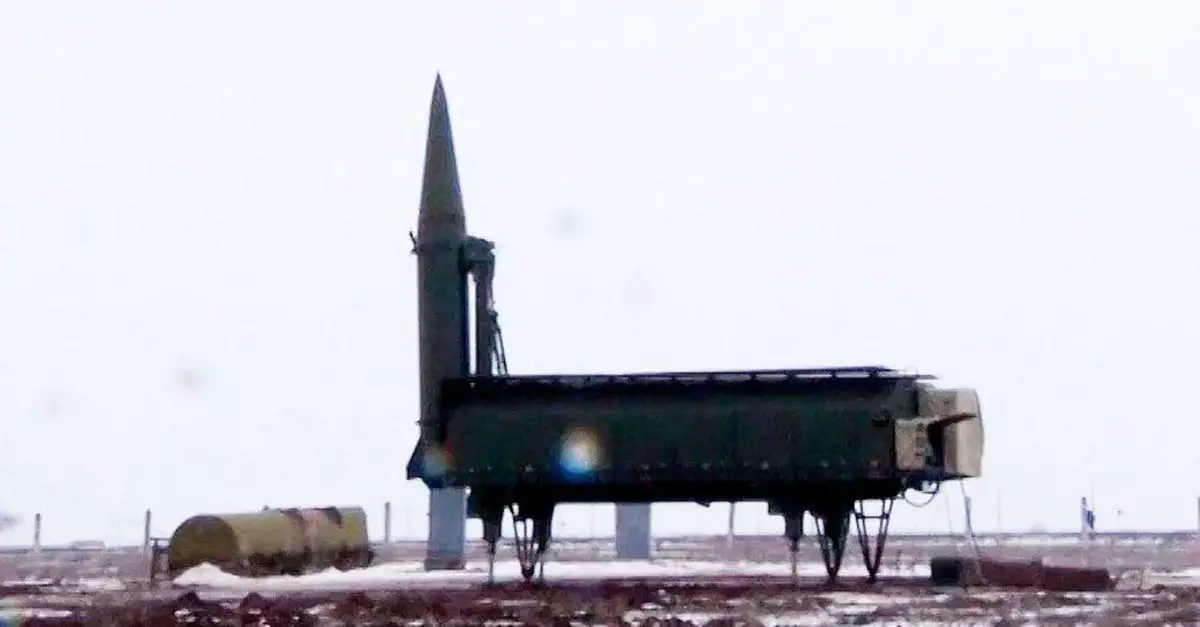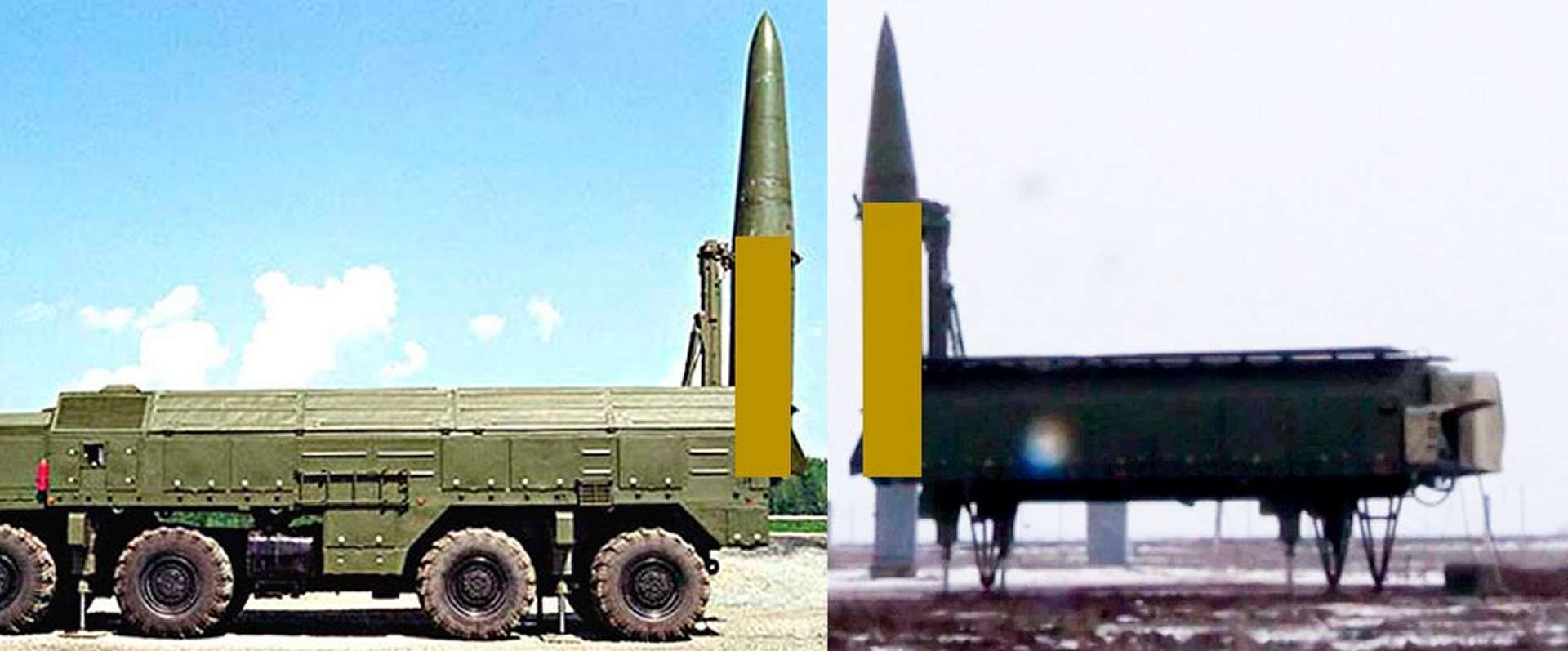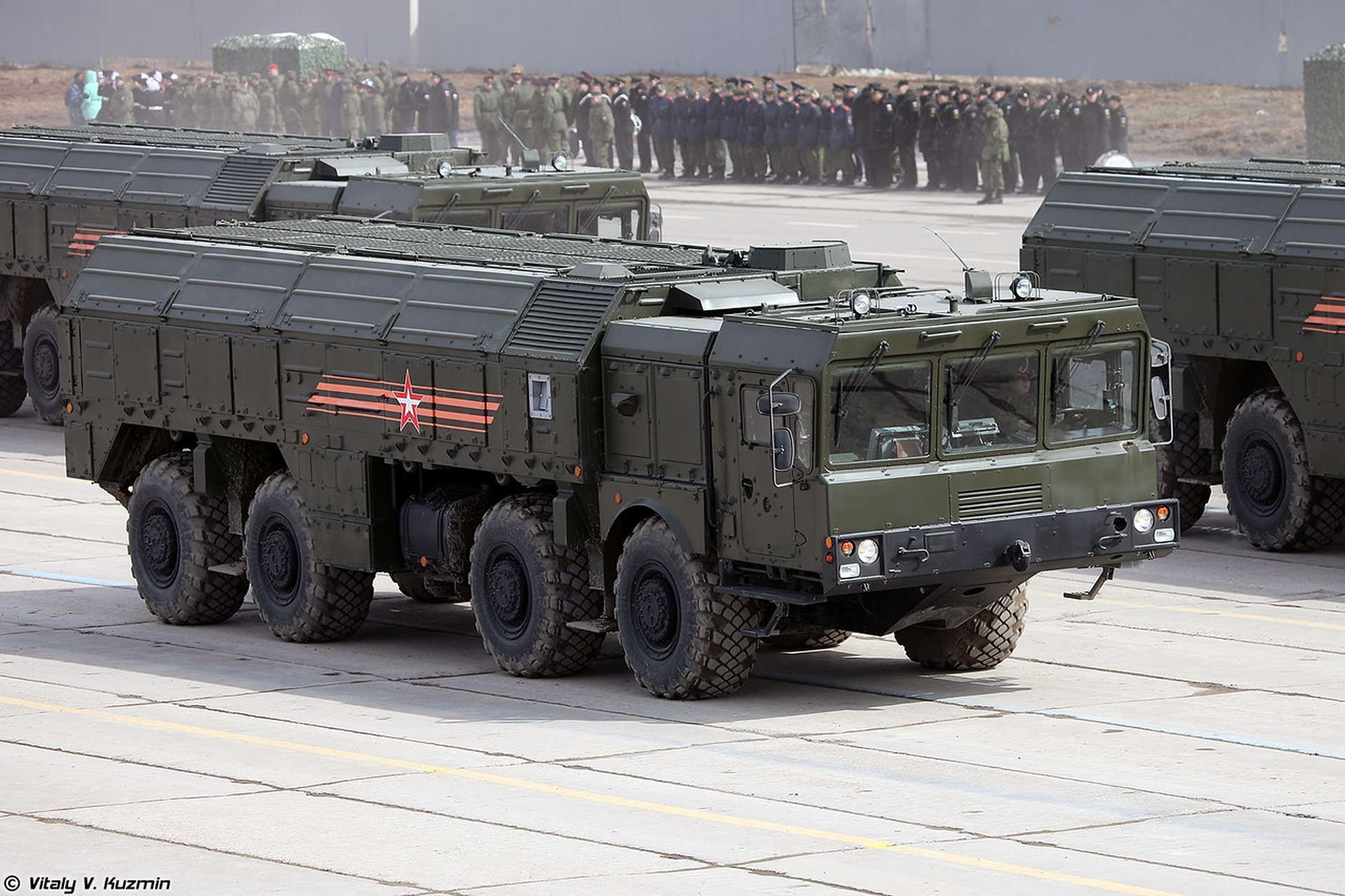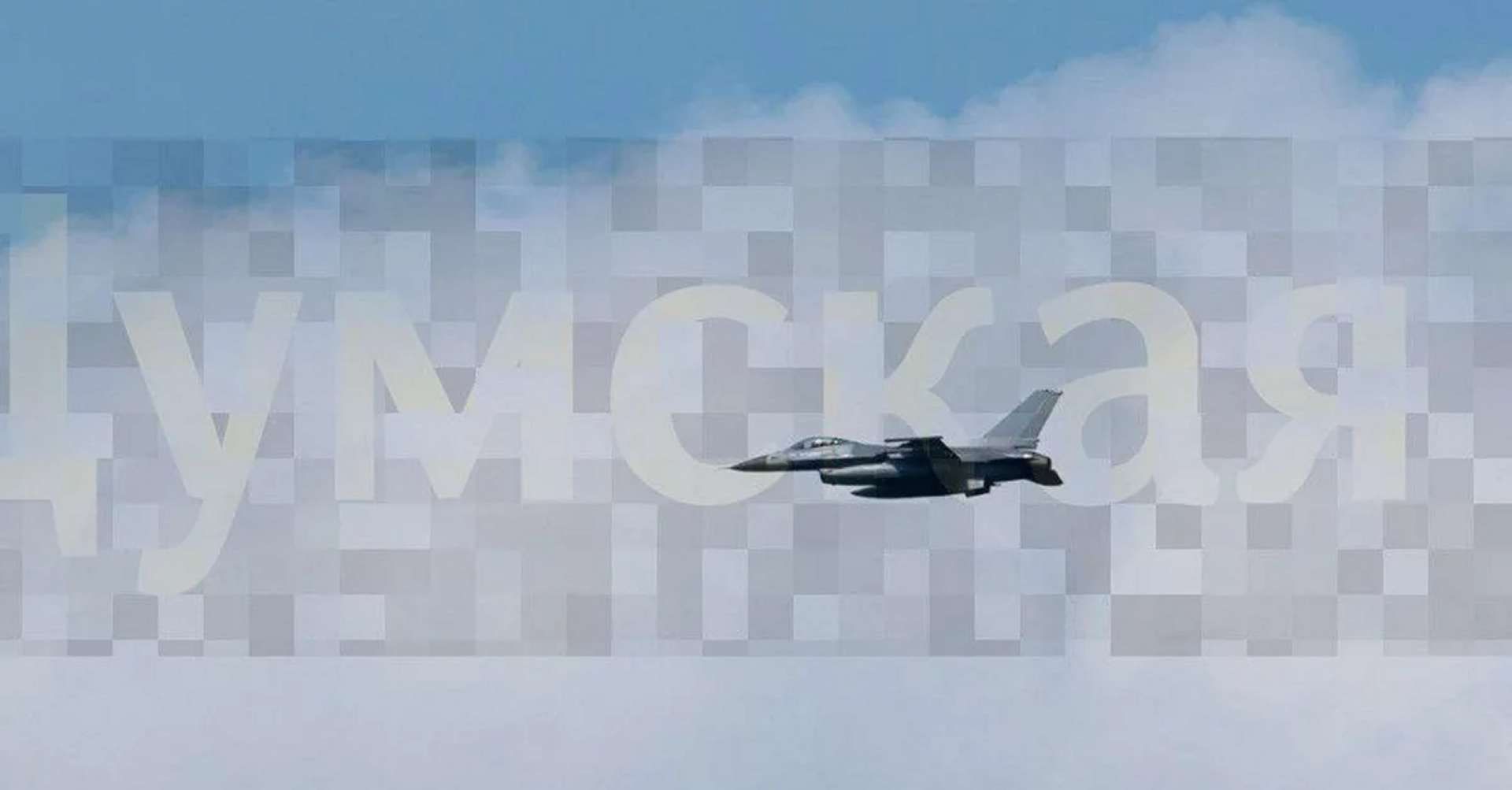Breaking News
Russian new Iskander-1000 ballistic missile threatens Ukrainian F-16s and half of Europe.
On June 28, 2024, Russian President Vladimir Putin stated that Russia might begin the production and deployment of medium- and shorter-range missiles in response to similar US deployments outside their territory. These missiles could potentially include the Iskander-1000, first revealed in May 2024 through a video commemorating the 78th anniversary of the Kapustin Yar missile test site. According to Russian sources, these missiles could be deployed in Kaliningrad or the Smolensk region, allowing Russia to potentially target almost half of the European countries, as well as naval assets in the Baltic Sea.
Follow Army Recognition on Google News at this link

One of these missiles could be the unofficially designated Iskander-1000 medium-range ballistic missile, currently under development by Russia’s Machine-Building Design Bureau (Kolomna). (Picture source: Russian social media)
On June 28, 2024, Russian President Vladimir Putin stated that Russia might begin the production and deployment of medium- and shorter-range missiles in response to similar US deployments outside their territory. This followed a statement from the Commander-in-Chief of the Strategic Missile Forces on December 17, 2023, indicating that the Russian military-industrial complex could quickly start production and supply these missile systems if needed. The Russian Foreign Ministry confirmed the start of production on May 6, 2024.
One of these missiles could be the unofficially designated Iskander-1000 medium-range ballistic missile, currently under development by Russia’s Machine-Building Design Bureau (Kolomna). This missile is based on the 9K720 Iskander-M ballistic missile system, featuring a range of up to 1,000 kilometers, twice the current range of the Iskander-M. This new missile was first revealed in May 2024 through a video commemorating the 78th anniversary of the Kapustin Yar missile test site.
The development of the Iskander-1000 follows reports suggesting enhancements to both the Iskander and Kinzhal missiles for greater range, more powerful warheads, and improved capabilities to evade air defenses. These developments align with Russia’s response to the US and its allies, particularly after the US announced plans in July 2024 to deploy long-range missiles to Germany. President Putin indicated that Russia would take reciprocal measures based on the actions of the US and its allies. The potential deployment of Iskander-1000 missiles in regions like Smolensk could also pose a significant threat to the newly arrived Ukrainian F-16 fighter jets.

Reports suggest that the Iskander-1000 will retain the classic layout of the 9M723-1/K5 missiles but with a 10-15% increase in the solid-fuel charge volume, as well as an updated engine, enhanced control system, and revised warhead. (Picture source: Russian social media)
Reports suggest that the Iskander-1000 will retain the classic layout of the 9M723-1/K5 missiles but with a 10-15% increase in the solid-fuel charge volume, as well as an updated engine, enhanced control system, and revised warhead. This new Russian ballistic missile will likely feature an autonomous inertial guidance system, likely with satellite navigation correction and possibly radar guidance based on a terrain map of the target area during the final flight stage. The missile’s deviation from the target is estimated to be within 5 meters.
To facilitate its deployment, the Iskander-1000 missile is expected to be launched using the standard Iskander launchers, sharing structural similarities with the 9M723 ballistic missile of the Iskander tactical missile system. The propulsion system is anticipated to be a solid propellant rocket engine similar to the 9M723 missile but potentially larger. It might utilize a new type of higher-pulse rocket fuel, possibly based on octogen, with a specific impulse of up to 480 units.
According to available information, this new fuel can propel the missile to speeds of 2,700 to 3,100 m/s, delivering high-explosive fragmentation (HE-Frag) or cluster warheads weighing up to 350 kg over distances of 900 to 1,000 km, or lighter warheads up to 1,250-1,300 km. The missile will feature gas-dynamic control and aerodynamic rudders for maneuvering, with overload capacities up to 25-30 units. It will also include an INS and a Comet-P8 GLONASS/GPS correction module or an X/J/Ka-band electronic warfare system.

The advantage of this new modification of the Iskander missile over other systems like the MiG-31K carrying Kh-47M2 Kinzhal air-launched ballistic missiles is its ability to significantly minimize detection and response times. (Picture source: Russian MoD)
The Iskander-1000’s development has potential implications for NATO and Ukrainian forces. The advantage of this new modification of the Iskander missile over other systems like the MiG-31K carrying Kh-47M2 Kinzhal air-launched ballistic missiles is its ability to significantly minimize detection and response times. The MiG-31K is detected almost immediately after takeoff by air defense radars and optical-electronic reconnaissance satellites, which can track the aircraft both day and night. This early detection gives personnel at strategically important facilities in Ukraine a 15-20 minute warning before a strike.
In contrast, the Iskander-1000’s solid-fuel rocket engines generate heat-contrast flares that are only visible during the active flight phases, providing a shorter warning time of 2 to 7 minutes, depending on the target's distance, complicating interception efforts by air defense systems such as the Patriot, the SAMP-T, or the Iris-T SLM.
Vladimir Putin recently stated that Russia might begin the deployment of medium-range missiles in response to similar US deployments in Germany. Therefore, Russian military experts believe several regions could host these medium-range missiles: the Smolensk region, along with the Voronezh and Moscow regions, could offer strategic depth without being close to borders, and the Kaliningrad region could provide a strategic advantage, as the potential flight time from the Kaliningrad Region to US missile bases in Germany could be under eight minutes.

To facilitate its deployment, the Iskander-1000 missile is expected to be launched using the standard Iskander launchers, sharing structural similarities with the 9M723 ballistic missile of the Iskander tactical missile system. (Picture source: Vitaly Kuzmin)
If Russia deploys a 1,000 km range ballistic missile in Kaliningrad or the Smolensk region, several countries would be within its range due to their proximity. From Kaliningrad, situated on the Baltic Sea and bordered by Poland to the south and Lithuania to the north and east, a 1,000 km range missile could cover a substantial part of Europe, including Poland, Lithuania, Latvia, Estonia, Germany, Denmark, Sweden, the Czech Republic, Slovakia, and Belarus. This area also potentially includes parts of Finland, Ukraine, and Norway, depending on the exact locations targeted within these countries.
From the Smolensk region, located further east within Russia and closer to the country's western border, a 1,000 km range missile could include Belarus, Ukraine, Poland, Lithuania, Latvia, Estonia, Moldova, and parts of Romania. This deployment would also cover parts of the Baltic Sea, potentially impacting maritime routes and naval operations in the region.
The strategic locations of Kaliningrad and Smolensk allow Russia to potentially target numerous NATO and EU member countries, raising significant security concerns within the region. The deployment of Iskander-1000 missiles in these areas would extend Russia's reach and enhance its capability to threaten Europe's critical assets, but also prompt further defensive measures from Ukraine, which could further limit its use of the newly-arrived F-16s.

On July 31, 2024, the Ukrainian publication Dumskaya released what is believed to be the first photograph of an F-16 aircraft flying over Ukraine. Interestingly, the aircraft lacked identifying marks, including the flight number on its keel. (Picture source: Telegram/Dumskaya)
The recent arrival of F-16 fighter jets in Ukraine from NATO allies, including six aircraft from the Netherlands, marks a significant step in enhancing Ukraine's defense capabilities. On July 31, 2024, a photograph released by the Ukrainian publication Dumskaya showed an F-16 aircraft flying over Ukraine, confirming the delivery. This development is part of Ukraine’s ongoing efforts to counter Russian aerial threats.
However, the arrival of these jets also highlights potential targets for the Iskander-1000. Russian President Vladimir Putin has warned that any Western air base hosting F-16s destined for Ukraine would be considered a legitimate target for Russian forces, including airfields in NATO countries such as Poland and Romania. The Iskander-1000’s capability to strike targets with high precision and minimal warning time increases the vulnerability of these airbases and shelters.
Ukraine has been preparing for the arrival of the F-16s by training its pilots abroad and enhancing its air defense systems. Despite these efforts, the potential deployment of Iskander-1000 missiles in regions like Smolensk could pose a significant threat to the operational effectiveness of the F-16s. The missile’s extended range and ability to evade interception make it a new Russian tool for targeting key Ukrainian airbases and shelters, potentially impacting the deployment and effectiveness of Ukraine’s new fighter jets.


























